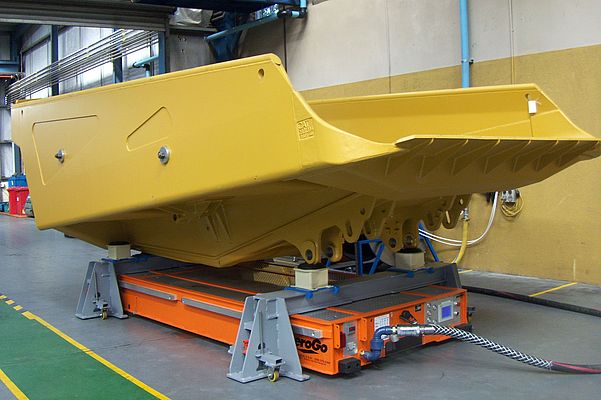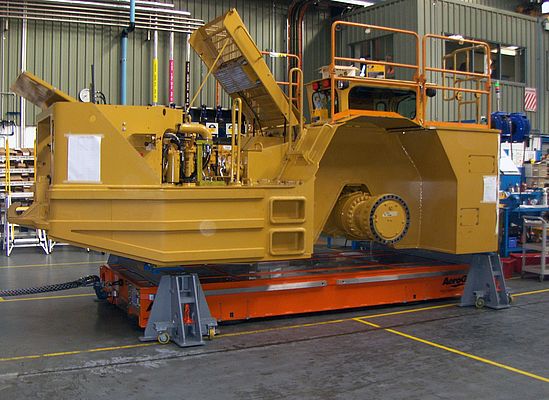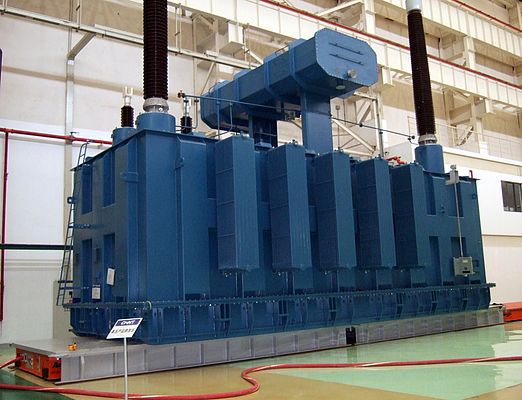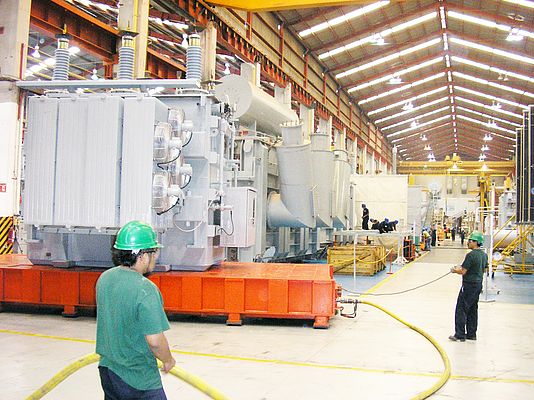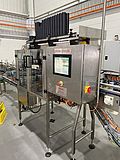The repositioning of multi-ton equipment during production can be challenging and costly. Cranes with their unidirectional moves limit relocation options and are expensive to operate and staff. Forklifts, which offer more flexibility, are mostly unable to move the heaviest of equipment.
There is a third option—one that has been around for many years but has been significantly enhanced in recent years. It is the air cushion vehicle (AV), a technology getting special interest because of its ability to maneuver loads up to 800 tons in multi-directions by controlling volumes of air. Its multiple functions can be controlled by one operator, making the machine and its process more cost-efficient than the other options, especially cranes.
It may be difficult to believe that a technology previously associated with air hockey games has progressed to the point of becoming an industrial alternative. A closer look at its development and technological capabilities reveals why. Consider the driving force of the technology, which is programmable logic controllers (PLCs) that require only one operator to program lifting and maneuvering commands. Other system components are robust air casters (the bags capturing the air for lifting and moving) and a precise traction-drive system. The load is situated on a support skid then lifted by films of air created by each air caster to effectively float the load to facilitate movement. Shop air systems will work with AVs, which eliminates the need for investment in an alternative air system or compressor.
Comparing AVs with cranes
AVs are a growing alternative to cranes for load moving for several reasons. Start with safety. AVs keep the load low to the ground so there is less likelihood of lift hazards than with cranes. Another factor is the reduced risk of damaged equipment as AVs virtually eliminate contact with the load as opposed to cranes. Also, the risk of worker mistakes during overhead crane operations is much greater than with AVs. According to recent data from the U.S. Bureau of Statistics, 90 percent of crane accidents are caused by human error. A sole operator has no difficulty putting an AV in place under the load. In fact, AV load moving operations have much less risk of damage than their overhead counterparts.
Third, consider the expense. For example, a significant segment of heavy industry relies on costly overhead cranes that come with an average price tag of approximately $2 million for a 450-ton model. Other costs include service contracts of up to seven percent of operational expenditures depending on location and, of course, manpower. All crane operators must be certified while AV operators only require training. Contracts strictly limit the types of crane operations and usage, unlike the AV where perhaps its greatest value is flexibility. Because AVs are low-friction and low-profile, they will not disrupt production during load movement unlike crane operations that occasionally require a halt to production until completion of the specific operation.
Another benefit for manufacturers is an AV’s ability to move and place equipment to facilitate batch production on an infinite basis. The capability means that the AV can conduct moves in practically every section or worksite in the facility. Such versatility is attractive to CFOs and risk managers who appreciative the cost-efficiency and reduction of risk to property and the workforce.
Process efficiency
In the end, it is the process efficiency that explains the growth in AV usage, particularly in small and mid-sized manufacturing operations. The overhead crane will continue to prove its value particularly in heavy industry. Yet, crane limitations can be costly, which is why today’s shops, with their focus on flexibility, cost-efficiency and safety, are adopting the air cushion vehicle as a valuable and profitable alternative.


